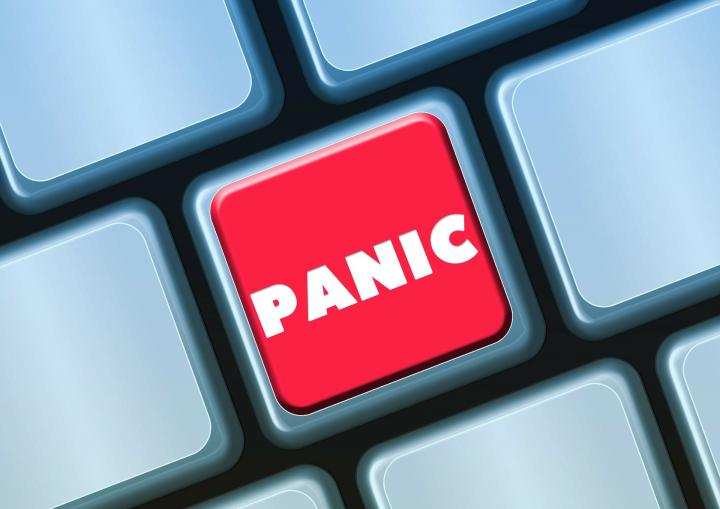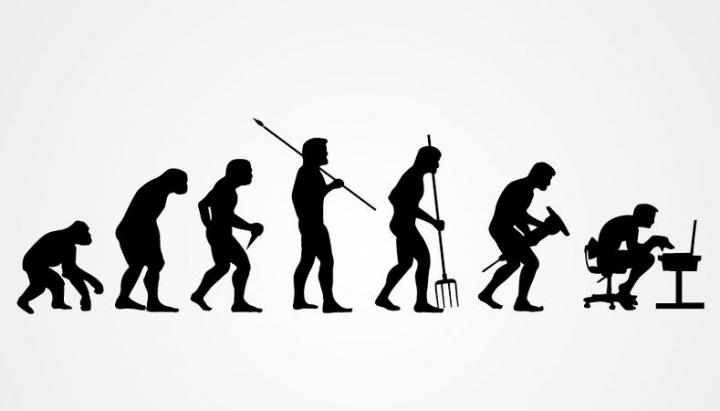Nervous System: What the Research Says About Zoom Fatigue
This weeks blog post has been written by Mindfulness Chaplain, Dr Kitty Wheater.

I first wrote about Zoom fatigue almost exactly a year ago. Back then, in the halcyon days of the early pandemic, we had no idea what was to come. We thought we’d potter along on Teams for a bit and then head back into the office. But time passed, and by the summer, I was hearing of enough exhaustion, agitation, and Zoom-induced despair that I started writing about Zoom burnout instead. The word ‘fatigue’ no longer seems to cut it: people experience anxiety, physical twitchiness, and tearfulness on Zoom, Teams, and Facetime. These experiences feel not only extreme, but also distressing: we don’t fully understand what is happening, or what to do about it, and that makes it feel outside our control.
To reduce Zoom burnout, we therefore need to understand exactly what is going on when we sit down in front of a gallery of faces, and why. In my Mindfulness for Zoom Fatigue workshop in March, recorded here, I presented new research from Stanford on the psychological effects of videoconferencing. Professor Jeremy Bailenson, founding director of the Stanford Virtual Human Interaction lab, argues that there are four main factors that make videoconferencing so exhausting. Let’s take a look.
Close Eye Contact
When you’re on a video call, you’re seeing faces at a proximity that – depending on the size of your monitor, and how close your screen is to your face – simulates a very intimate personal space. Your brain has two ways of interpreting close, prolonged eye contact. One is as ‘threat’, and an indication of conflict; the other is as ‘drive’, and an indication of potential mating.
Either way, close eye contact in video calls put your nervous system in hyperarousal for prolonged periods of time. Much as you might appreciate your colleagues and classmates, video calls literally put them ‘in your face’.
Seeing Yourself
On all video calls, there will be a small part of the screen where you can see your own image in real time. This activates self-monitoring: another form of threat-based hyperarousal. Bailenson cites additional research to show that seeing yourself for prolonged periods of time increases self-criticism and negative affect.
Put simply, being in video calls for hours is like having someone follow you around with a mirror. All day. In everything you do. (Did anyone say ‘Instagram’?)
Reduced Mobility
Many people report feeling physically trapped on video calls. The demand to stay still, within the frame of your camera, is very different from how we might usually conduct conversations in person or on the phone. In the latter, we might shift in our seat, get up and sit down, perhaps move around the room. Because videoconferencing forces us to sit still, it actually simulates hypoarousal: a threat-based shutdown of the nervous system. You feel like a rabbit stuck in the headlights, because from a nervous system perspective, that’s exactly what you are.
Cognitive Overload
On video calls, you’re having to work much harder to process nonverbal information than you would do in person. Equally, you’re working harder to communicate, amplifying a nod or shake of the head, or a thumbs-up. ‘That adds cognitive load,’ says Bailenson, ‘as you’re using mental calories.’ If you find yourself with a fixed smile at the end of a Zoom call, or a general feeling of effortfulness, you’re not alone.
Bailenson’s four factors of Zoom fatigue beautifully describe what happens when we meet online. Simply put, Zoom is tiring because it activates the threat- and drive-based functions of the nervous system. It’s just as accurate to call it ‘Zoom anxiety’ – because this is, in effect, what makes you exhausted afterwards. Many of you know this already, telling me that you prefer to meet by email, or that you’re skipping classes because the screen-time is overwhelming. You’re not alone, and Bailenson’s research explains why.
Understanding Zoom fatigue from this nervous system perspective is particularly helpful, because it shifts the emphasis from what to do afterwards – when you’re already tired – to what might help in the first place. Here are some ideas.
Technical Tips
Note to managers and teachers: turning off cameras where you can will help, as will taking one-to-one meetings to the phone as a matter of course. But for many of us, video is vital to our work. In pastoral care, for example, I need to see facial expressions and body language in order to gauge how someone is doing. So what about meetings where it’s preferable to see each other?
Bailenson offers various technical solutions here, ranging from using an external keyboard, which will increase the space between yourself and your screen, to reducing the window size of the video. My favourite Zoom fatigue teaching tool is to ask attendees to right-click on their pictures, click the three dots, and press ‘hide self-view’. This makes a big difference to two of Bailenson’s factors: you can no longer see yourself, and people instantly feel less inhibited about shifting posture or adjusting their seat. Suddenly, the Zoom room becomes more human.
Mindfulness for Zoom Fatigue
At its simplest, mindfulness for Zoom fatigue is about down-regulating the threat/drive reaction: giving your mind and body a chance to step out of the amped-up, trapped feeling that prolonged hours of video calls will incur. Regular practices like this 13 min Mindfulness of Body and Breath for Sleep will help, perhaps at lunchtime, as will this 24 min Grounding Through Feet, Seat, and Hands.

For a 15 minute mindfulness practice that will help you work with sensory input from your screen in real time, moment by moment, skip to 18:50 in this recording of the workshop on mindfulness for Zoom fatigue. You’ll be invited to move your attention to specific places in peripheral vision, and in the body, to help regulate nervous system activation as it arises. You can go back to it as much as you like to practise: you’ll start noticing your own particular patterns of screen-based hyperarousal, as well as which techniques particularly help.
My lunchtime mindfulness drop-in sessions run twice a week, Tuesdays and Fridays, until the end of June. We meet on – you’ve guessed it – Zoom, for a check-in, guided practice, and gentle facilitated inquiry. It’s a Zoom fatigue-friendly space, but if you can’t bear the idea, help yourself instead to the library of guided practices that I record from the sessions. They’re open to all, in both video and audio-only versions.
My workshop on Zoom fatigue will return next month, but until then, hang in there; take regular screen breaks; and soak up some of this spring sunshine.

